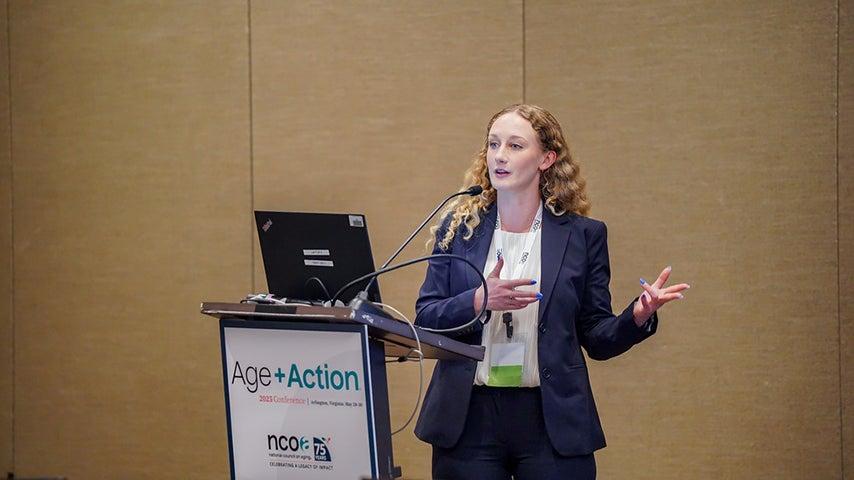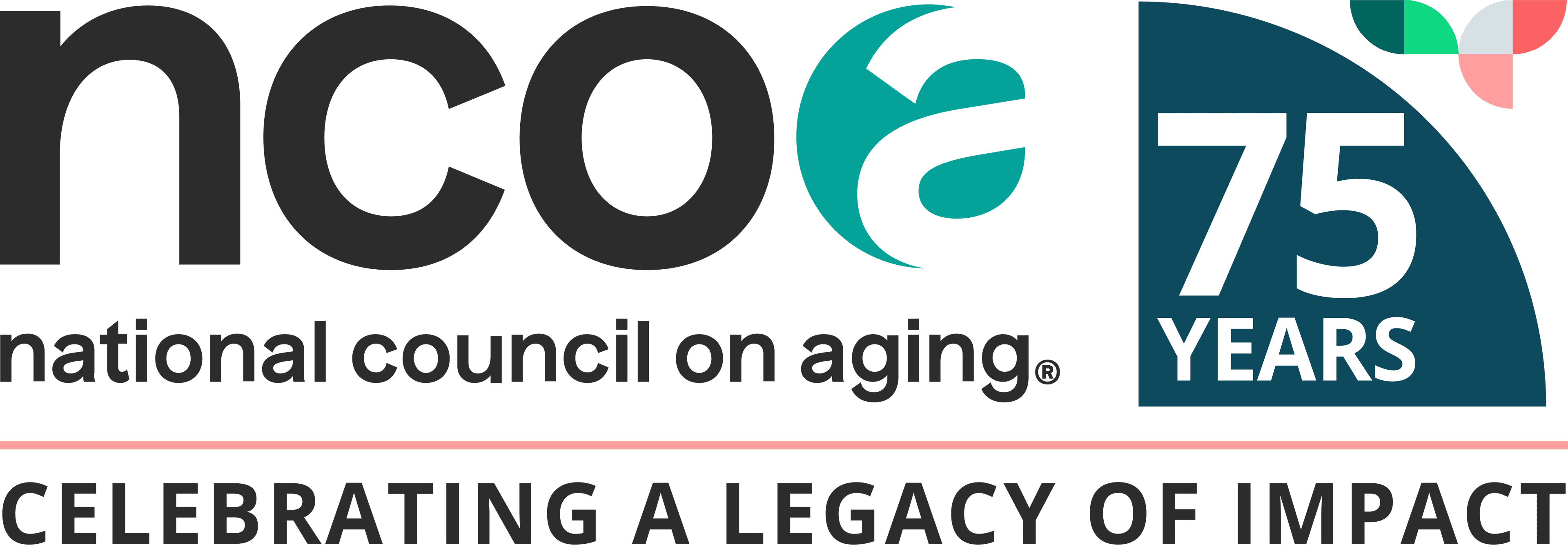
One of the exciting aspects of developing or implementing new programs is the opportunity to share information and outcomes at local and national conferences. If you’re new to the conference world, creating a presentation may feel intimidating. We’ve gathered several tips to help you create the best conference presentation to help showcase the amazing work you’re doing.
Before you begin
Take a deep dive into what’s trending
Look at other local and national conferences to see what’s being addressed. Think about how you can add fresh insight to trending topics. Consider what others might find helpful, relevant, and useful.1
Examine the conference focus areas
Conferences will often revolve around a theme and/or specific focus areas. Review these carefully to ensure your proposals focus on at least one key area. If keywords are provided, try to incorporate those into your title and/or description.2
Time to get creative
Every title should be a hook
Your title is an opportunity to grab the audience’s attention. Follow the 5 Principles of an Effective Headline to create a meaningful and engaging title.3
1. Know and address your audience
2. What will the audience gain from the session (benefit)
3. What issue (pain) are you working to resolve
4. Create curiosity
5. Add urgency
Examples of intriguing session titles:
- “50 Shades of Grey: Ethics in Advising”
- “Implicit Bias and Micro-Aggressions: Understanding How Well-Meaning People Can Cause Harm Through Everyday Interactions”
- “Friends For Life: How to Foster Age-Gap Friendships for Healthy Longevity”
- “Bringing Research Interventions to Protect the Most Vulnerable”
Creating meaningful content
Know your research
Use current research to support your presentation. This may include research related to the problem you are solving, outcome measures from your own research, or research supporting your proposed solution.1
Why is your information important?
Identify the skill skills, tools, or strategies participants will leave your session with. Be sure to tie the information back to the identified pain points, making it relevant to attendees.2
Be SMART with your goals
Start by creating SMART goals that are specific, measurable, attainable, relevant, and time-based.2,4 For example:
After attending the session, “The Gifts of Gratitude & Self-Care” participants will walk away with at least three effective strategies to support self-care during the holiday season (specific and attainable). Research related to the impacts of gratitude on physical and mental health will be shared (measurable, expert driven). Strategies discussed can be applied in both personal and professional settings (relevant and attainable for all participants). Participants will leave with a personalized written selfcare plan and resources for future reference (resources are measurable which can evaluate success). All strategies can be implemented immediately (time-based).
Magic number: 3
Listing things in threes creates a beginning, middle, and end. Consider identifying three main points or takeaways participants will learn from your presentation and highlight those in the title and description.2
Clear and concise language
When we’re immersed in our work it’s easy to use jargon and acronyms to describe what we do. Your presentation should use clear and concise language. Keep sentences simple and use common language.1,2
What’s in it for participants?
Think about some of your favorite conference sessions. What sets them apart from the others? Did the presenter engage you in discussion or activities? Did you leave the session with concrete tools to use in the future?
Understand Adult Learning Theory
Adult Learning Theory was developed by Malcolm Knowles in the 1980s and the concept of andragogy was born. Andragogy theory explains that adult learners are focused on understanding why they’re doing something and prefer hands-on experiences with less instruction. Essentially, adult learners want to tackle things themselves. Knowles established six basic assumptions about adult learning.5
- Need to Know: adult learners want to know WHY they need to learn something and understand its value.
- Self-Concept of Learners: adult learners want to be treated as capable and direct their learning.
- The Role of the Learners’ Experiences: our background, learning style, motivation, needs, interests, and goals make adult learning a very individual experience. Utilizing experiential learning techniques creates an individualized learning experience. (More to come on experiential learning.)
- Readiness to Learn: as adults we’re motivated to learn something new when we have a problem to solve. Focusing on real-life situations will increase motivation.
- Orientation to Learning: as adults we’re focused on tasks and problem solving. We want to learn how to perform effectively and manage everyday problems.
- Motivation: adults are more likely to respond to internal motivation (i.e., increased self-esteem, satisfaction, etc.).
To summarize, adults learn best when they understand why what they’re learning is important, they can learn in their own way, and they can engage in hands-on learning in a positive and encouraging environment.
Create Interactivity
Focus on experiential learning activities that allow for reflection, analysis, and discussion. Engage participants intellectually, creatively, emotionally, socially, or physically with case studies, role-playing exercises, group discussions or problem solving sessions. For example, can you walk participants through a sample exercise from the evidence-based program?6,7
What will participants leave with?
By creating actionable learning objectives your participants will walk away with new tools and resources they can implement in their work. Learning objectives should be created using Bloom’s Taxonomy of Measurable Verbs which describe and classify observable knowledge, skills, attitudes, behaviors, and abilities.8 Conferences provide a wonderful opportunity to highlight the work you’re doing and share your successes. By creating an interactive, engaging presentation you can ensure participants leave with actionable strategies or skills to use in their work.
Sources
1. Wilcox, E. et al. From submission to applause: conference proposals that get accepted. Advising Strategy + training. Mar. 16, 2017. Found on the internet at https://advisingmatters.berkeley.edu/submission-applause-conference-proposals-get-accepted
2. Diebold, H. 8 Essential Tips for nailing your next conference program proposal. Modern Campus. Found on the internet at https://sapro.moderncampus.com/blog/8-essential-tips-for-nailing-your-next-conference-program-proposal
3. Sherbill, A., et al. 91 awesome headline formulas to make your presentations instantly attractive. Powtoon Blog. Found on the internet at https://www.powtoon.com/blog/91-headline-formulas/
4. Substance Abuse and Mental Health Services Administration. Setting goals and developing specific, measurable, achievable, relevant, and time-bound objectives. Found on the internet at https://www.samhsa.gov/sites/default/files/nc-smart-goals-fact-sheet.pdf
5. Kamışlı, H., & Özonur, M. The effects of training – based on Knowles’ adult education principles – on participants. Eurasia Journal of Mathematics Science and Technology Education. Nov. 25, 2017. Found on the internet at https://doi.org/10.12973/ejmste/80801
6. Experiential Learning | Center for Teaching & Learning. Boston University. Found on the internet at https://www.bu.edu/ctl/ctl_resource/experiential-learning/
7. Forbes. 14 Great Examples of Experiential Learning in the Workplace. June 10, 2022. Found on the internet at https://www.forbes.com/councils/forbescoachescouncil/2022/06/10/14-great-examples-of-experiential-learning-in-the-workplace/
8. Bloom, B. Bloom’s taxonomy of measurable verbs. Utica University. Found on the internet at https://www.utica.edu/academic/Assessment/new/Blooms%20Taxonomy%20-%20Best.pdf



